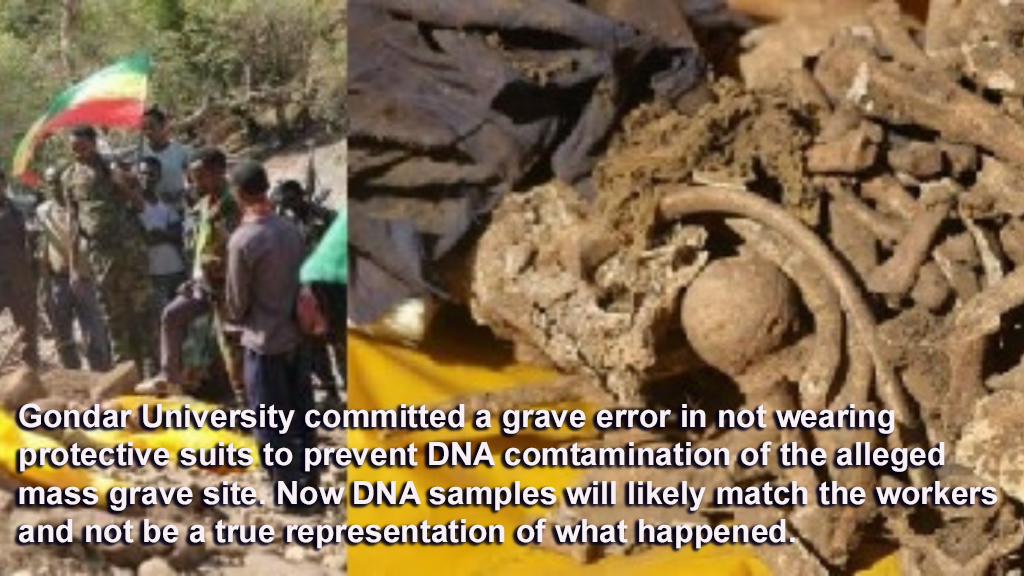
Even though Gondar University and for that matter any university in Ethiopia does not possess advanced anthropological or forensic capabilities to analyze long buried remains they have made claims to the contrary. One cannot judge ethnicity by bone structure. Or even clothing as Tigrayans and Amhara in northern Ethiopia share those items if even some survived. Judging the age of remains is difficult because it is due in part to the soil composition, weather, species of insects, and other things are can be specific to region. There are only a few of these experts world wide.
Probably one of the most important ways to analyze the remains is to get samples of DNA that can be traced to living relatives. Unfortunately when we examine the photograph submitted of the “discovery and excavation” we see that no one is wearing any protective garments to prevent incidental hair and skin dust from falling from the Amharic workers onto the scene. Contamination of human DNA at burial sites from failure to take these precautions is well recognized as a standard part of proper procedure.
The photograph of the improper procedures not being followed and the lack of any scientific report discussing the procedures followed or more likely not followed may explain why no “scientist” has made any supporting statement. Any other place in the world would have sealed off the site and called in world renowned experts to get the best evidence of what happened. Why did Ethiopian authorities not do the obvious?

